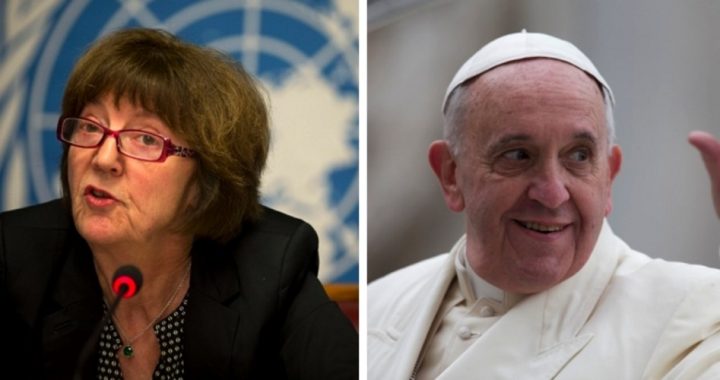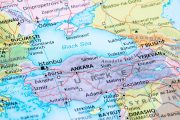
On January 16, 2014 the United Nations Committee on the Rights of the Child interrogated the Apostolic Nuncio (an ambassador of the Vatican) to the United Nations in Geneva, Monsignor Silvano Tomasi. Various news outlets referred to the committee proceedings as a “grilling” of H.E. (His Eminence) Tomasi concerning the Catholic Church’s progress with stemming sexual abuse of children by pedophile priests. The purpose of the meeting was to ascertain how compliant the Holy See has been with the UN Convention on the Rights of the Child, of which the Holy See is a signatory.
The UN Committee released a report on January 31 detailing the committee’s findings from the January 16 inquiry. The report focused partly on the Church’s well-publicized issues with sex abuse of minors by priests, but also dealt with subjects concerning everything from contraception to the use of “baby boxes” by Catholic organizations.
The UN would prefer that the Catholic Church provide and promote abortion, which is against Catholic teaching, as an alternative to the aforementioned “baby boxes” referenced in article 35 of the report, which are a blame-free mechanism for mothers to ensure care for their children. These boxes, where a mother who isn’t able to care for her child may anonymously leave the baby, go against article 7 of the Convention on the Rights of the Child, which states that a child has a right to know and be raised by the child’s parents. The UN sees abortion as an alternative to the baby boxes. In article 55 of the report, “The Committee urges the Holy See to review its position on abortion … with a view to identifying circumstances under which access to abortion services can be permitted.” It is safe to assume that the Committee knows this is impossible for the Holy See to do without ceasing to be Catholic.
Also at issue in the report is the Holy See’s emphasis on the complementarity of the sexes and use of “gender stereotypes.” These issues are addressed in article 27 using the terms “boys” and “girls”:
The Committee regrets that the Holy See continues to place emphasis on the promotion of complementarity and equality in dignity…. The Committee also regrets that the Holy See did not provide precise information on the measures taken to promote equality between girls and boys and to remove gender stereotypes from Catholic schools textbooks.
The report emphasizes the need for and lack of equality between “girls and boys”; however, in article 57 (f) the report urges the Holy See to educate boys and men “in particular” about “responsible parenthood and sexual behaviour.”
There is, overall, very little church teaching concerning sexual morality that is not touched upon in the report with a suggestion that it be changed. In article 56 the committee urges the church to change her stance on contraception; in article 57(a) the committee strongly insinuates that the church allow and encourage premarital sex among teens; and the church’s teaching on homosexuality is taken to task in article 25, among others.
The Catholic Church’s views on sex were not the only teachings taken to task by the committee, however. The church also holds a different view from the committee on the role of parents, whom the church holds responsible for educating their children in the way the parents see fit. In article 31 “The Committee is concerned that the Holy See restrictively interprets children’s right to express their views in all matters affecting them, as well as their rights to freedom of expression, association and religion.”
There are myriad other “the-Committee-is-concerneds” throughout the report, including constructive criticism on the handling of sex abuse by priests. These concerns are mostly with a view to change church teaching, however.
Of course, none of the aforementioned disagreements was lost on the Holy See and, as LifesiteNews reported on February 10, there was some exchange of rhetorical blows after the report was issued. Both Tomasi and Fr. Frederico Lombardi, the director of the Vatican press office, issued statements decrying the report’s apparent bias. Lombardi took the committee to task for a “lack of understanding of the specific nature of the Holy See” and both men insinuated that the report may have been written prior to the Holy See’s presentation to the committee. Lombardi remained diplomatic, however, and chalked it up to “different visions” in the “vast world of the UN.” The committee issued a response which seemed to be a mere diplomatic nicety for its brevity and evasive nature.
The UN is currently dealing with its own sex abuse scandals and human rights violations, perpetrated by UN “peacekeepers,” on far grander scales than those of the Holy See. These scandals are repetitive occurrences, suggesting an endemic incapability of dealing with these issues on an organizational level. This colors the whole context of the committee’s report on the Holy See and their criticisms of the Catholic Church’s handling of sex abuse as odd and ironic. The UN giving advice on how an organization should deal with sex abuse of minors feels a little like listening to a child molester pontificate on the best way to run a daycare.
Photos of Chairperson of the U.N. Committee on the Rights of the Child Kirsten Sandberg and Pope Francis: AP Images
Related Articles:
UN “Peacekeeping” Troops Face Scandals on Sex Crimes, Corruption
UN Slammed for Its Forced Abortions in China Using U.S. Funds
UN-Backed Troops Wreak Havoc in Africa
UN Troops Accused of Sex Crimes Worldwide



